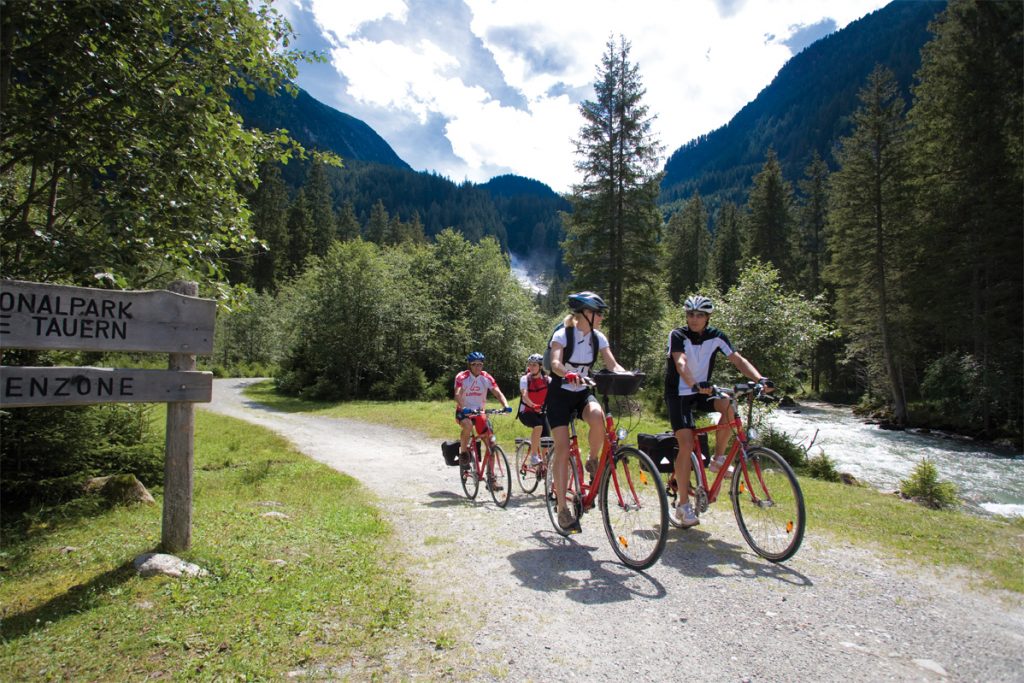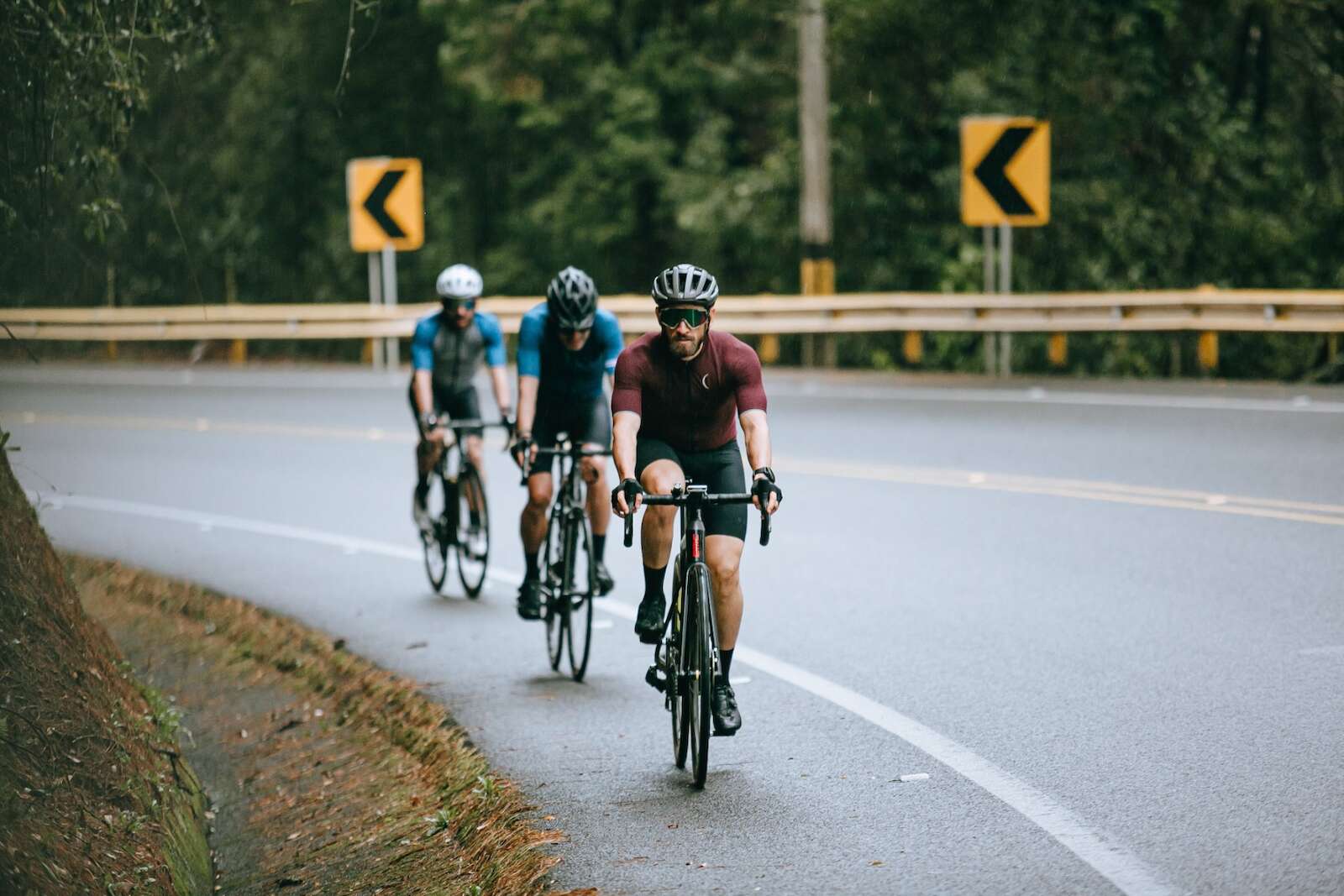


Some years ago, a cycling group I was with rolled into a village square in the Slovenian countryside and started to fill our water bottles in a fountain. A white-haired gentleman seemed to listen intently to our small talk, then walked over.
“England?” he asked. “No, America,” we responded. He stepped back, took his hat off, and placed it over his heart, reciting three of the few words he knew in our language: “God bless America.” A woman who identified herself as his granddaughter joined us and explained: “His village was occupied by the Nazis during World War II. The Americans liberated it.”
Grandpa listened and nodded, putting his arm around a woman in our group. “Thank you. Thank you. Thank you.”
This is one reason I prefer to explore a country by bike: those chance encounters that just aren’t possible when you travel by faster means.
As one writer once put it about traveling around Europe, “If you travel by car, train or bus, it’s like watching a beautiful movie pass by. If you travel by bike, you’re in the movie.”
One thing I’ve realized over the years is that the older I get (I’m 61 now), the more I enjoy traveling by bike, especially as tour companies are now making it easier than ever for travelers of all ages to enjoy the wonderful experience of bicycle tourism.
Most commercial tour operators work out all the logistics for you. They make the reservations at each hotel along the route and usually transfer your luggage for you each day. You can choose how easy or difficult you want the trip to be, if you have a guide or not, and how much money you want to spend.
As more people choose two wheels over four and active lifestyles over sedentary ones, the business of bicycle tourism has propelled itself into the fast lane.
Cycling is for just about everyone—people of all shapes, sizes, ages, and ability levels. Opportunities abound for children, who can now ride behind mom and dad in a bike trailer, tag-along, or tandem. For adults, there’s the choice of road bikes, mountain bikes, and the increasingly-popular hybrid (sometimes called trekking) bikes.
There are even electric bikes for those of us who need a bit of a push, tandem bikes for lovers (and for visually impaired riders paired with sighted cyclists), and recumbent bikes for those who wish to take a load off their backs and backsides.
Put simply, there is no better way to see a new country or place than by bicycle.
It’s called slow travel, and it’s the best possible way to experience a new culture, landscape, and people. It’s the antidote to mind-numbing bus tours and mile-a-minute travel itineraries. It’s a chance to discover a new world by pedaling through it, rather than flying over it or zooming across it.
Bicycle tourism is flexible. You can leave from your front door or fly across the world. There are one-day rides and weeks-long routes. Trips that are organized for you down to the last detail and adventures you can plan yourself and even as you go.
You can choose routes that meander along a scenic bikeway or roads that race you from town to town. You can choose from tour programs that offer short distances or full-day rides, leisurely riding or hardcore cycling, and terrain ranging from flat bike paths to steep mountain climbs.
Bicycle tourism is for fun. It’s typically not a means to train or get in shape (though you can certainly do both), but rather to create the best kind of souvenir: a lasting sense of the road you traveled and the places you visited. It’s a way to capture the spirit of your destination rather than record a new race time.
When you hear “bicycle tourism,” do you picture an experienced cyclist on an expensive bike with saddlebags hugging the tires? If so, it’s time to draw a new picture of what bicycle tourism means, which is exactly what we’re here for.
Bicycle tourism encompasses several different type of touring. Commercial or self-supported. With a guide, or without. With lodging, or not. There are lots of options. Here’s a breakdown.
1. Guided: You have a guide, a set plan, and a structured daily schedule. These tours will have just about everything planned out for you: hotels, rental bikes, routes, meals, luggage transfers, sightseeing tours, and more. The guide will be there to show you the region and to help in case of breakdowns (mechanical or human). Guided tours are usually group tours (unless you book a private program).

2. Self-guided: I find these tours to be the most popular form of bicycle tourism. They cost less than guided tours but still maintain a level of support and convenience that allows you the flexibility to explore on your own, without sweating the logistics.
The tour operator still does all the heavy-lifting of the planning, however, it’s your responsibility to get to the next hotel each day (maps and detailed tour instructions are provided for you). Self-guided tours typically include lodging, breakfast, luggage transport from hotel to hotel, tour descriptions, maps, detailed route planning, and often a service hotline.
3. Supported tours: These tours are a hybrid of the self-guided and guided tours, and are also considered “semi-guided.” They are similar to self-guided tours with one primary exception: the addition of a support van (but not a ride-along guide as a guided tour would have).
4. Self-contained tours: There are two types of self-contained tours: organized and independent. Organized self-contained tours usually have representatives from the tour company or association riding with you.
However, riders carry their own gear. These can be camping overnights, hotel overnights, or a combination of the two. An independent self-contained tour means the cyclist does all the work—from planning logistics and routes to carrying all your own gear.
If the thought of distant bike travel is a bit daunting, even if organized and supported by someone else, then start local! There’s no better way to jump on the saddle than to, well, jump on the saddle.
And start simple. Bike tours don’t have to be long and challenging. Ride from your house to a hotel 15 miles away, stay overnight, and return home the next day. Look at that! Now you’re a bike tourist!
In fact, the best way to prepare for and learn more about this wonderful activity is to start local. You’ll quickly counter any perceived hurdles you might have, such as equipment, navigation, or ability.
Other great places to start are a local charity or statewide ride, which gets you cycling in your own region with the comfort of other cyclists pedaling next to you.
So you think a bicycle tour could be a unique way to experience a foreign country, but you aren’t sure where to start. Here are ten questions to consider when you are trying to choose.
1. Why tour by bike? As I’ve mentioned, touring by bike is perhaps the best way to truly experience the landscape and culture of a region—the unique features of the terrain, the smell of flowers or ripening grapes, the sounds of wildlife, or the people and hidden treasures of small towns. Again: do you want to watch the movie, or be in it?
2. Why should I go with a local tour operator? I believe that the best way to experience a new land and culture is with the guidance of locals.
3. What’s my budget? Until recently, you had a choice of two extremes: “on the cheap” self-contained tours, where you’re entirely on your own, or expensive “all-inclusive” luxury tours. Now there are alternative, mid-range programs, typically self-guided tours offered primarily by local overseas bike tour companies.
4. Where do I want to go? Researching destinations is a good place to start narrowing your search. To determine your preferences for destinations, ask yourself some key questions:
5. Do I prefer riding with a guide and a group or more on my own? Guided and self-guided tours offer somewhat different experiences, and each has unique advantages (and, to some people, disadvantages).
Frankly, I love both. If I’m feeling more independent, especially in a country where I know the language or feel comfortable, I’ll often opt for the flexibility of a self-guided tour. If I run into trouble, I can call the local company’s hotline. If I want camaraderie and really want an insider’s view of a region, I’ll often opt for guided. Decide which suits you best.
6. What’s my ability level? Are you a leisurely rider looking for modest miles or are you very comfortable on the saddle and looking for long miles?
7. How many days do I want my bike tour to last? Consider travel and recuperation time, both pre and post-tour, or how long you might want to extend your trip.
8. Do I want to ride every day? Most bicycle tourists enjoy traveling each day — cycling from Point A to Point B and sleeping in a new location each night. The scenery changes and the experiences are gratifying.
Still, there’s something to be said for staying overnight in one town and doing day trips – you don’t have to pack each morning, you can settle in, and you can really get to know a location. Decide if you want rest days built into the itinerary.
9. How far do I want to ride each day? Remember you are on vacation and there will be a lot to see along the way—and you’ll be riding for several days, usually back to back. So don’t use your weekly Sunday ride as a guide.
10. What kind of route and riding surface do I prefer? You should think about how comfortable you’d be occasionally riding in light to moderate road traffic, or if you’d prefer a bike tour that primarily follows a bike path. Terrain and riding surfaces (packed dirt, gravel, asphalt) should also be researched.
Bicycle touring is a wonderful way to see and experience the world. Even if you’re not a regular cyclist, don’t feel threatened by the idea of a bicycle adventure. It’ll change the way you travel, and the way you see the world.
Have more questions or concerns? Email us at info@biketours.com.
Guided, Self-guided, Travel tips
Judy Jackson
5 years ago
BikeTours.com Staff
5 years ago
Taylor Anderson
6 years ago
BikeTours.com Staff
6 years ago